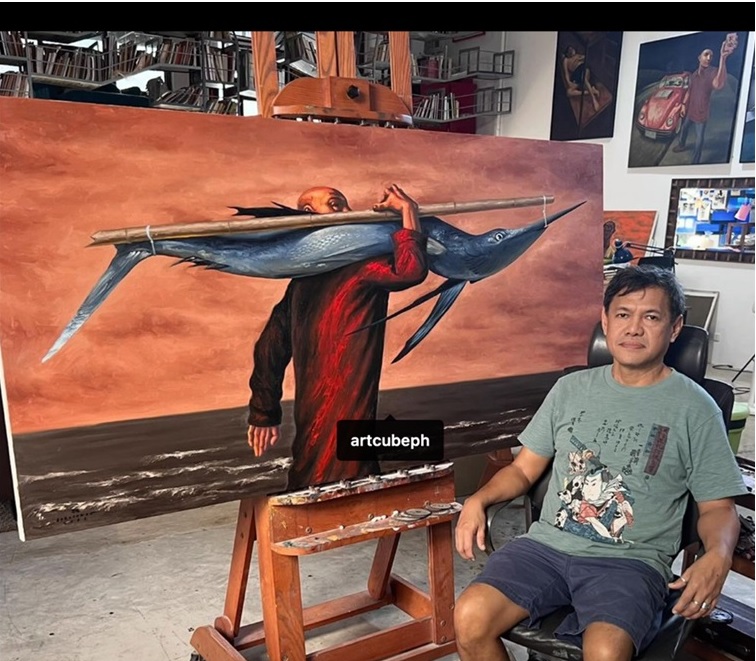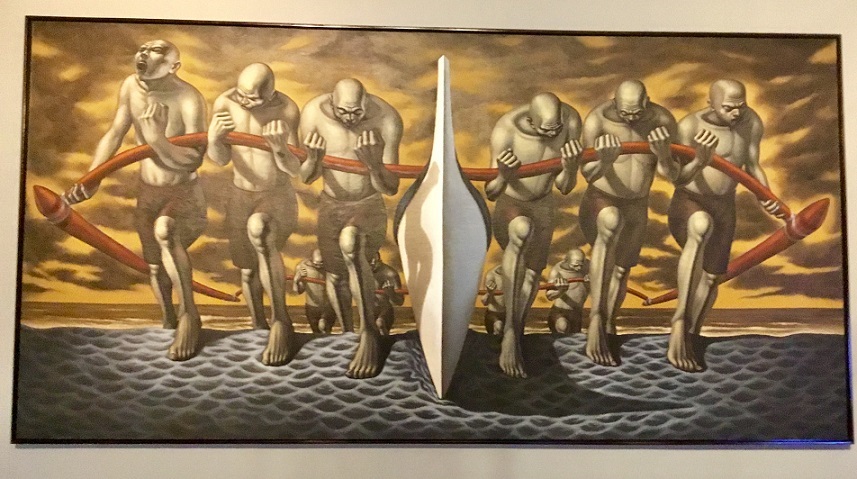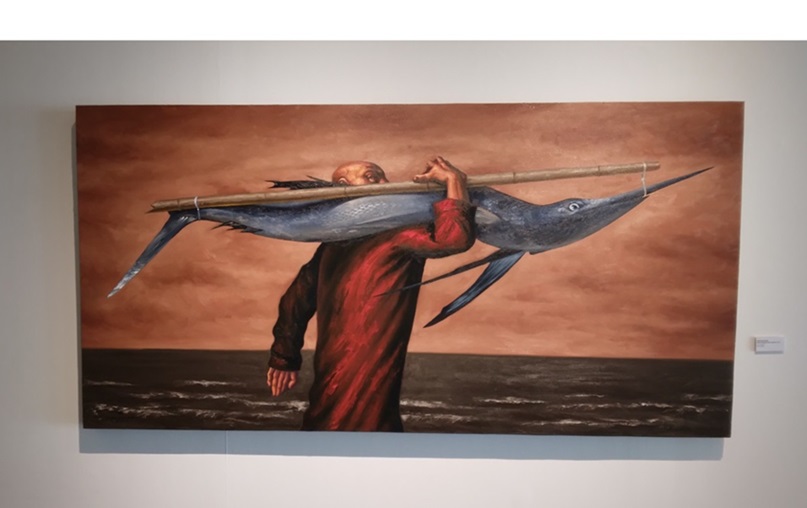
Photos by R.C. Ladrido and from Elmer Borlongan’s Instagram
When you see those baldheaded figures, with their big round eyes, elongated and distorted limbs in muted earth colors— almost instinctively, you know they are made by Elmer Borlongan.
In a recent exhibition titled Hanap/Buhay (Art Cube Gallery, February 2024), the artist presents seven oil paintings, capturing the true grit of ordinary Filipinos engage in an honest day’s work.
Atin ito!
In Magtataho sa Tabing Dagat (2024) a vendor with calm determination, carries two aluminum cans on a pole containing sweet tofu with dark sugar cane syrup, hoping that everything will be sold and go home early enough to his family with some money for dinner. His little amulet of a doll in red boots dangles from his grey bag, a good luck charm that never fails.
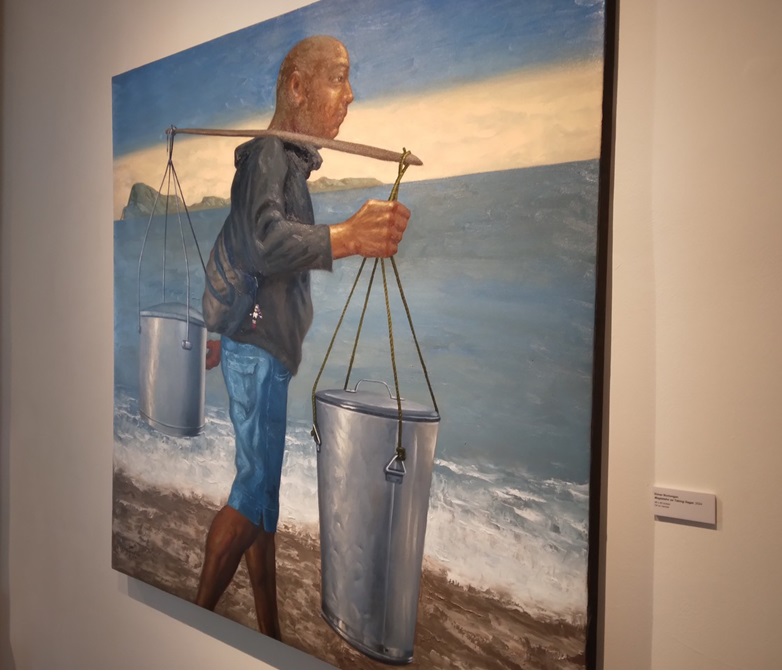
In Dorado (2023), Borlongan portrays a fisherman proudly showing his prized catch of dorado, amidst a glorious orange sky. And West Philippine Sea: Atin Ito (2023) depicts a male figure with a forceful stride forward, with a giant of a blue marlin in a pole resting on his shoulders.
Set against the shores, seas, and sky of Zambales, as well as its landscape with a view of the mountain of Pundaquit, the works reminds us of the bounty of the sea, and the forces of geopolitics with China’s continuing destruction of marine resources, forceful reclamation and occupation, and claims of ownership in the West Philippine Sea, consequently undermining the ability of Filipino fishermen to harvest fully the bounty of our seas. Such Chinese intrusions go on, despite the 2016 UNCLOS (United Nations Convention on the Law of the Sea) arbitral ruling that categorically upheld Philippine sovereignty in South China Sea and that China has no legal right whatsoever in the area.
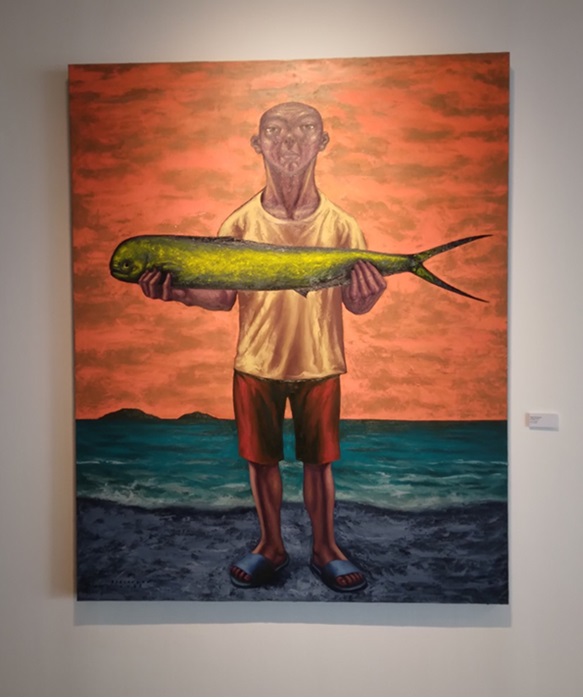
The bounty of the land and the sea, and ultimately, the food we eat in our tables, rests on Filipino labor, one that has been exploited, abused, and taken for granted for ages.
Farmers and rural workers continue to toil the land with their own ties to nature, amidst the ominous whirr of a military helicopter in the background in Bigas, Hindi Bala (2023). And yet, many still go hungry. Furthermore, amidst calamities manmade and natural such as drought and extreme flooding brought about by climate change in our midst, many more will go hungry.
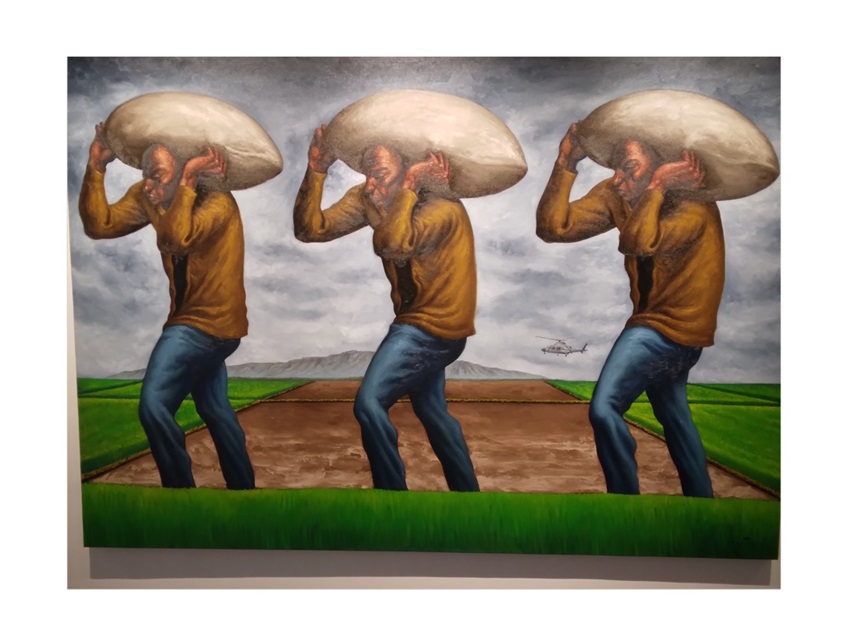
In an urban setting, Sukli sa Fishballs (2023), where the fishball cart remains ubiquitous and a cheap source of merienda for everyone. Coin by coin, change is always given, every bit counts for both vendor and buyer.
Ode to the ordinary
Elmer Borlongan’s works deal with daily struggle of existence in urban and rural areas by Juan de la Cruz personified by daily wage workers, farmers, fishermen, itinerant peddlers, the disabled, jeepney drivers, beggars, street children—the people who are always around us, and yet, nobody really sees them as they remain invisible to society.
As Borlongan has stated in numerous interviews, he usually sketches everyday encounters in his surroundings that eventually make it from drawing to an oil painting.
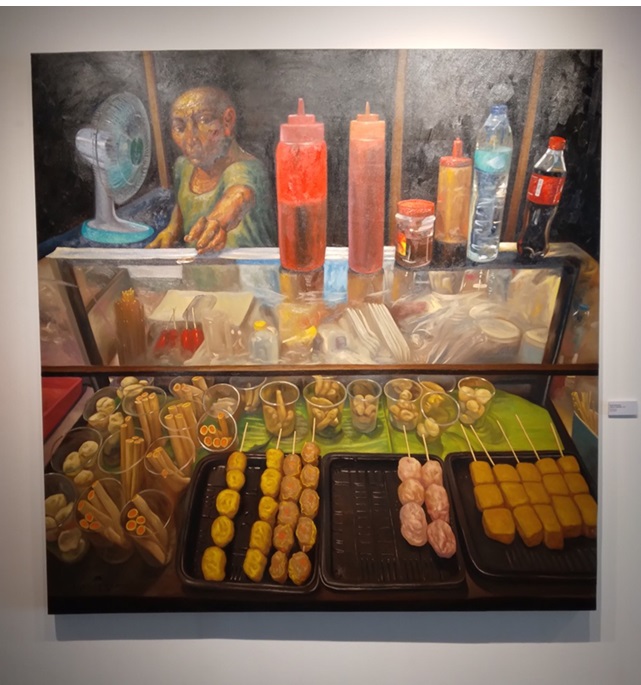
Style
Borlongan’ style has been described as figurative expressionism, with his subjects whose eyes are the most expressive: in despair, a plea for sympathy, a cry for help; in grief, a humane touch; in anger, a moment of defiance.
In Hanap/Buhay, the male figures have become older, with their faces bearing wrinkles and deep furrows of never-ending toil under the harsh tropical sun that brings smaller and smaller returns, and yet they continue doing what they know best — fishing, farming, and selling to feed and raise their own families and provide food for the rest of us.
The artist
A painter and a printmaker who works on woodcut, rubbercut, wood engraving, and drypoint, Elmer Borlongan (b. 1967, Manila) is a fine arts graduate of the University of the Philippines (1987). He learned drawing and painting at the age of 11 under the close guidance of Fernando Sena who had been conducting art workshops in Metro Manila.
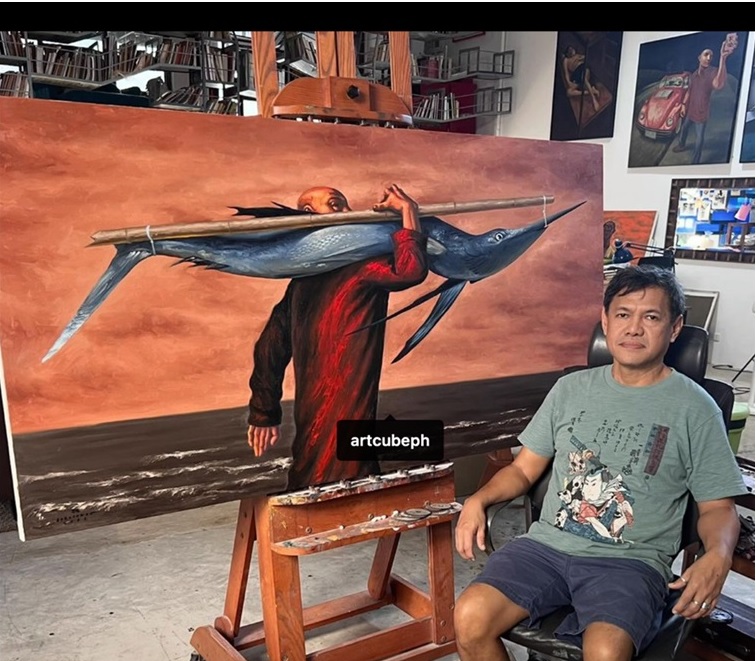
Borlongan’s awards include the 1994 Thirteen Artists Awards, Cultural Center of the Philippines with four works that include Pamilyang Menthol and Laklak, both made in 1994. In 1988, he won second prize for Rehimen at the Metrobank Annual Painting Competition, the first major recognition of his artmaking. Rehimen shows a seat of power guarded by hungry and ferocious dogs, and in the foreground, a malnourished figure lies sprawled, representing marginalized Filipinos, says the artist.
Five years later in 1992, he won another second prize at Metrobank for his work Tampuhan (1992). In 2004, he received the Award for Continuing Excellence and Service from the Metrobank Foundation.
Married in 1998 to artist Plet C. Bolipata, a visual artist, whom he met while on an artist residency at CASA San Miguel, Zambales in 1995.They have lived in San Antonio, Zambales since 2002.
